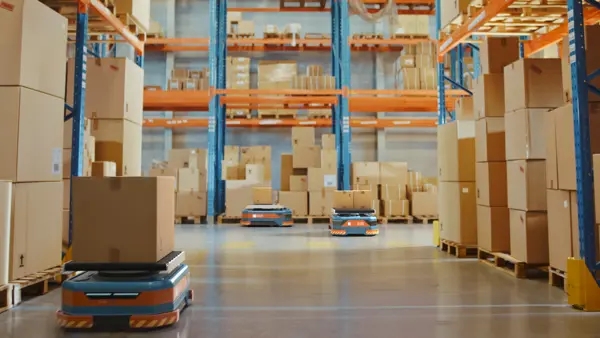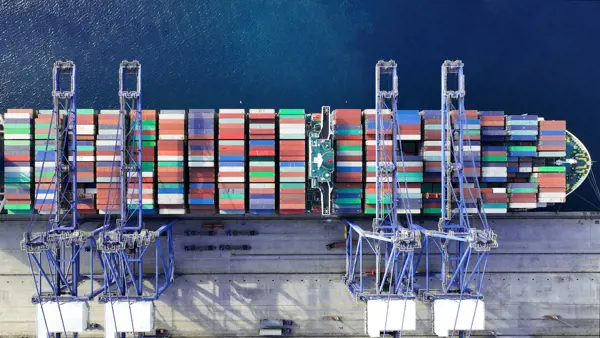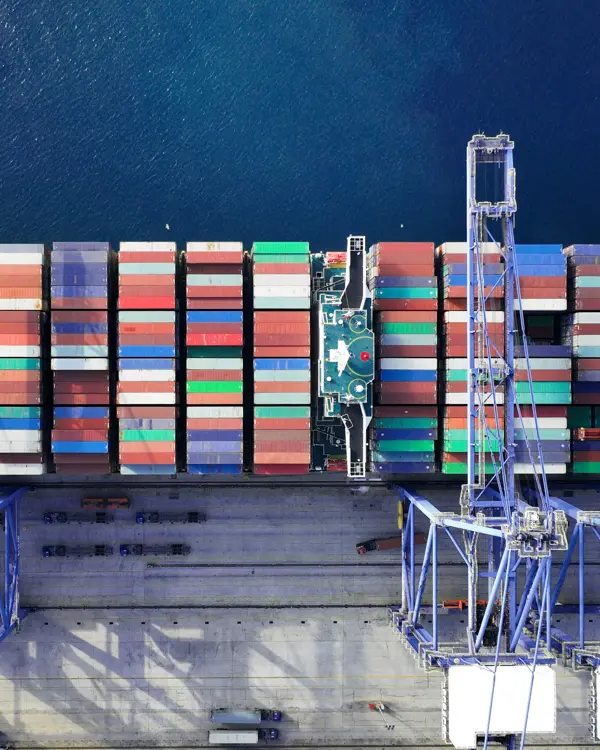All at sea
In this section, we highlight the key retailer supply chain challenges. Some of them are long-term pain points and others are pandemic-induced concerns – either way, retailers continue to navigate particularly choppy waters.
1. Excess Inventory
Whether it’s the unseasonably wet 2023 summer, continued low consumer demand for goods, or the pandemic bullwhip effect – when fluctuations in retail demand caused fluctuations in wholesale, distributor and manufacturer demand resulting in supply chain inefficiency – retailers have an inventory problem.
Excess stock is a major issue, contributing to rising storage costs and under-sold inventory. In an August 2023 survey, 62% of retailers expressed unease about overstock and 99% admitted to losing at least £10,000 of revenue due to unsold stock each quarter. (1)

According to the research, UK retailers have been forced to sell nearly half (48%) of their stock at a discounted rate due to excess inventory – this started in the aftermath of the COVID crisis but has been exacerbated by the subsequent economic downturn.
Karel Schindler, CEO at ROI Hunter, the company behind the research, says:
“Overstocking began last year (in 2022) due to misconceptions around consumer demand for products, with little foresight into how the current cost-of-living crisis would shake the retail industry. “Beyond this, the current promotion strategies favoured by retailers are unknowingly worsening the situation. For example, many are unable to promote seasonal items online quickly enough at full price and they often go out of season
or become discounted as it takes weeks for advertising algorithms to catch up.”
Online fashion retailer ASOS, and fashion and homeware retailers Next and Marks & Spencer have all reported challenges with excess inventory, with the former particularly vocal on the rising costs it has incurred due to growing product returns rates.

2. Warehousing woes
The online furniture retailer Made.com is an example of how supply chain management can get out of control in a volatile macroeconomic environment. Initially established as a built-to-order retailer, the company’s growth in the pandemic led it to increasing its stored inventory levels. In the inflationary environment following Covid and the war in Russia, the company was unable to adjust to the demands of this new model and way of operating
As the company collapsed, then CEO Nicola Thompson explained how the retailer was “Well-adapted, over many years, to a world of low inflation, stable consumer demand, reliable and cost efficient global supply chains and limited geopolitical volatility”. That world vanished, the business could not survive in its current iteration, and we could not pivot fast enough." (3)
Sara Arthrell, chief marketing officer at Inventory Planner, says: “Made.com’s crash was a wake-up call to everyone in retail about the dangers of excess stock.” (4)
Although it is easing in the UK now, the shortfall in suitable warehouse space is still a challenge for retailers, Rose Maher, Retail Lead at HSO says:
"One of the biggest gripes we’ve heard about is demurrage charges. One retailer’s warehouse was so jam-packed it didn’t know where stock was and it couldn’t receive more goods, so it had a container on a dock for months. Demurrage charges at ports are extortionate, so it cost the firm tens of thousands of pounds."


3. Legal matters
Heightened legislation around cybersecurity, data protection, and good environmental practice and transparency is adding an administrative burden on retailers.
Laetitia Kotsiopoulos, director of digital transformation at Intersport Group, says:
“The protection of supply chain data from cyber threats is becoming an increasingly pressing concern, which is why Intersport International is currently focused on the digitalisation of its processes. Ensuring supply chain resilience is a top priority, involving actions such as diversifying suppliers, identifying alternative sources, and investing in risk management strategies."
4. Technology constraints
Many retailers are navigating the above challenges with outdated technology – and any retailer you speak to will say legacy tech holds them back from being more efficient in their supply chain management and general operations.

Rajiv Thakrar, director of group finance at fashion retailer Monsoon-Accessorize, says:
“The problem with legacy tech is the ‘ball and chain effect. You’re tied to these systems and have to get involved in quite antiquated manual processes just to keep the lights on. Therefore, having the agility to help the business meet its strategic objectives with all of these issues becomes tougher.” He adds: “You spend most of your time doing work which is non-value-add – and maybe 1% of your time helping business leaders achieve what they want to achieve.”
For retailers in a depressed economy, a core challenge can be finding the business case to make the necessary investment in the latest transformative tools.

5.Rising costs
All of the above challenges contribute to rising supply chain costs. But the ongoing global inflationary environment, felt particularly keenly in energy and transportation, means retailers face growing costs throughout their supplier base. The potential of a recession in the UK or what is at best an ongoing period of economic instability and uncertainty means consumer demand, especially in non-discretionary sectors such as fashion, is muted and therefore margins are squeezed.
Marcel Borlin, chief technology officer at department store business Harvey Nichols, says: “The cost of supply chains, in general, is going up – all the way from product coming out of factories to shipping costs, energy, and fuel prices. Logistics and container prices may have come down somewhat or are flat but the costs from suppliers are on the rise.”
He adds: “For us specifically, the impact of Brexit and the customs regulations and documentation we now have to produce are quite onerous. On the flip side, we’re starting to see capacity increase in warehousing which means costs are coming down after spiking after the pandemic.”


